
C.C.N.'s,
M.S. UIGE - 1954 to 1978
Use Internet Explorer & Old
Google for this Web Page to load perfectly!
Please Note: All ssmaritime and my other
related ssmaritime sites are 100% non-commercial and privately
owned sites. Be assured that I am NOT associated with any cruise
or shipping companies or travel/cruise agencies or any other
organisations! The author has been in the passenger shipping
industry since May 1960 and is now semi-retired, but continues to
write article on classic liners and cruise ships in order to
better to inform cruise and ship enthusiasts for their pleasure!
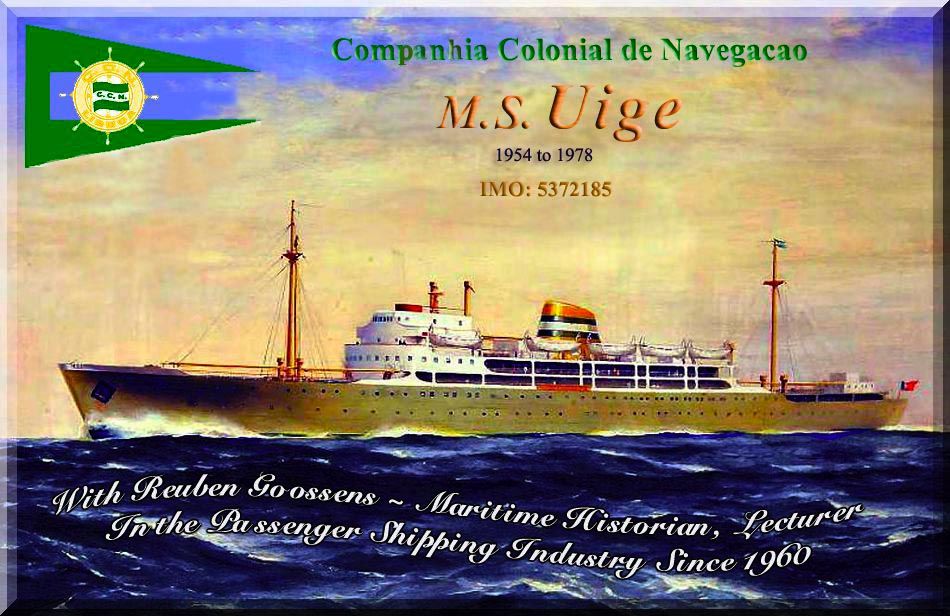
Please
Note: Had it not been for Mr. Rutger Verhoef of the
this M.S. UIGE feature! Sadly friends, this may well be my very last single ship feature ever that I will ever write as my hands and eyes are noe very, very poor!
Thus, thank you Rutger!
The Portuguese Passenger-Cargo Liner M.S. UIGE
was built by the Belgian shipyard of “Sociètè Anonyme
(S.A.) John Cockerill” at
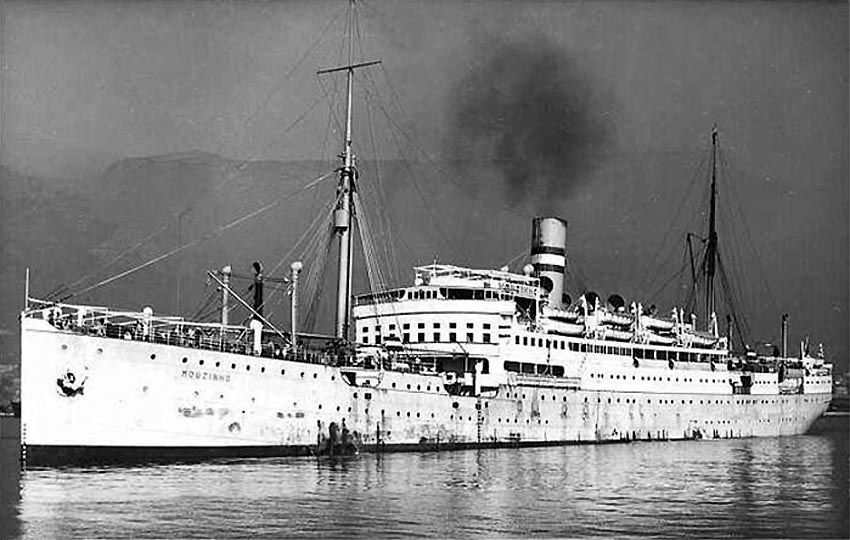
Here we see the aging 46 year old S.S. MOUZINHO towards her final days
The UIGE was designed by well known maritime designer “Acurcio de Araújo,” and she was constructed in a traditional dry dock. Her first keel plate was laid on December 19, 1952.
The hull and incomplete superstructure was launched on January 23, 1954 and she was officially named “UIGE” by her godmother Maria Augusta do Rosário Bustorff Silva, who was the daughter of the President of the CCN’s, Dr. Bustorf Silva.
The completed M.S. UIGE undertook her deep sea
trails on the
The completed 477ft - 145.55m long M.S. UIGE had a gross tonnage of 10,001 GRT, and she accommodated a total of 571 passengers, with; 78 in First Class and 493 in Third Class.
The UIGE had some 120 tons of light alloy used in the construction in her low slung superstructure. This section was 2 decks high and was occupied mostly by First Class. There were 2 deluxe Suites, as well twin bedded and some cabins with a third upper fold away berth, for an additional passenger. All Suites and cabins had full bathrooms, or with facilities with a shower. All Public Rooms were located aft of two decks and Dinning Rooms were located under the forward (First Class) and the after end (Third Class) of the superstructure. Third Class cabins on C deck were from 2 to 4 berth cabins, whilst on D deck there were mostly 8 berth cabins. All passenger facilities, public venues and accommodations were fully air-conditioned!
Whilst her cargo load capacity comprised of; 5 holds making her able to transport 8,719m³ of general cargo, including 450m³ of refrigerated cargo.
The ship was delivered to her owners in
M.S. UIGE departed
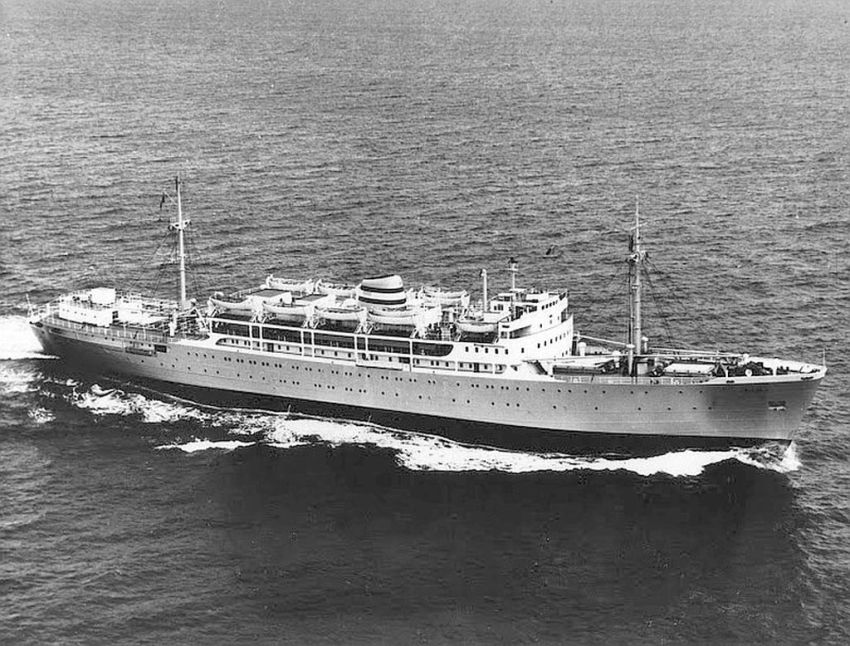
A fine
photograph of the M.S. UIGE taken from the air as she headed for
During the next month, she was fully crewed
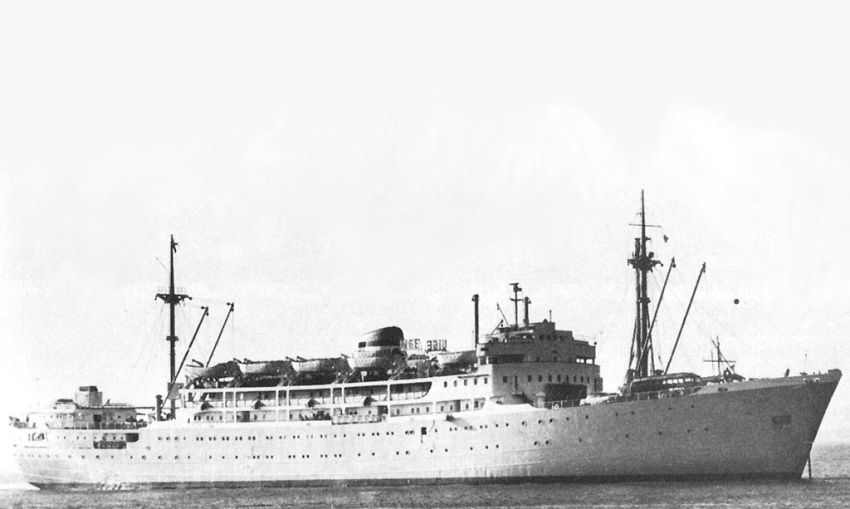
A side on starboard view of a humble passenger-cargo liner M.S. UIGE
As from voyage 4, which departed
Thereafter her schedule was as follows:
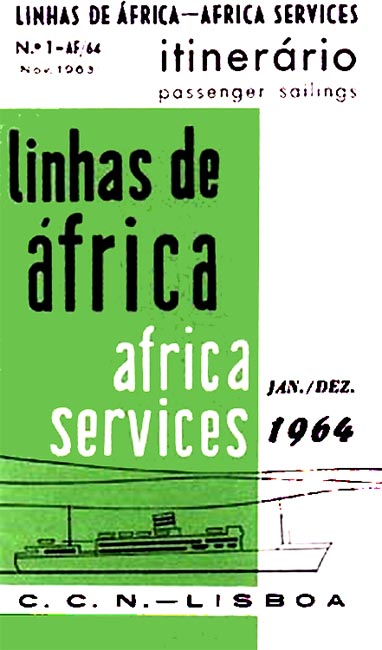
The cover of a C.C.N. 1964 Sailing Schedule
Provided by www.timetableimages.com/maritime/images/list.htm (C) Björn Larson
Although she was certainly not the
company’s most luxurious ship when it came to on board
facilities, yet the M.S. UIGE was an extremely successful ship
within the CCN fleet, having both an excellent cargo capacity,
and throughout the vast majority of her career an excellent
passenger loading, having such delightful and intimate First
Class facilities, and this was combined with exceptional
operational economy offered by her engines.
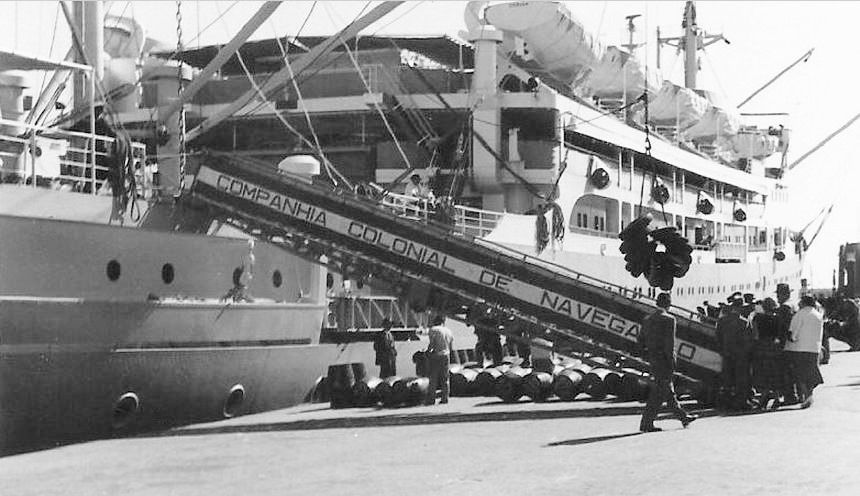
A typical dockside scene of yesteryear; bales of cargo are loaded and passengers await boarding
On February 4, 1974 the UIGE was transferred to
CTM being “Companhia Portuguesa de Transportes
Maritimos,” of
Trooping duties:
It should be noted that during her career she
was used from 1974 by the Portuguese ministry of the Army as a
troopship with the war in the then Portuguese-Guinea. She made
many voyages to and from
However, as is so well known, all passenger shipping suffered badly from the mid sixties and the early seventies, and it was much the same with the UIGE, for travel by air had began to take over from ocean voyages as prices flying in Boeing 747 (Jumbo Jets) were becoming good value for money!
Therefore, CCN decided that M.S. UIGE would be
laid up in Lisbon on January 27, 1976, and sadly she remained
laid up in a ‘dead state’ (engines shut down) until she
was finally sold on November 29, 1978 to Baptista & Irmaos,
Ltd, being a Portuguese ship breaker, and she was re-registered
in
The once popular M.S. UIGE finally left
her anchorage on March 16, 1979 and she was taken to Alhos
Vedros, at the Tagus Estuary (across the bay from Lisbon), and
demolition work commenced within a month. Due to her being such a
strong and a well built ship, her dismantling would be a very
slow job, and the UIGE was eventually dismantled 18 months later
with work completed in September 1980. Her registration was
officially cancelled in
Ships
Name: M.S. UIGE is a name is based on UIGE a region in
northern
Official No: H 428.
Call sign: CSAN.
IMO No: 5372185.
Tonnage: 10,001 GRT; 6,830 NET; 14,480 Displacement.
Length: 477ft - 145.55m.
Width: 63ft - 19.15m.
Draught: 26.4ft - 8.02m.
Engines: Single B&W Diesel Engine number 6410, type 874VTF-140, 8-cylinder, 2-stroke, 6,850 BHP operating at 125 RPM,
Propeller: Single screw.
Speed: 16 knots service speed, 17.5 knots maximum speed.
Oil consumption: based on her service speed she had a consumption of 20 tons of Diesel oil per 24 hours.
Passengers: 78 First Class & 493 Third Class, a total of 571 passengers.
Crew: 180.
Features: Fully Air-Conditioned.
Load
capacity: 5 holds able to transport 8,719m³ of general
cargo, including 450m³ of refrigerated cargo.
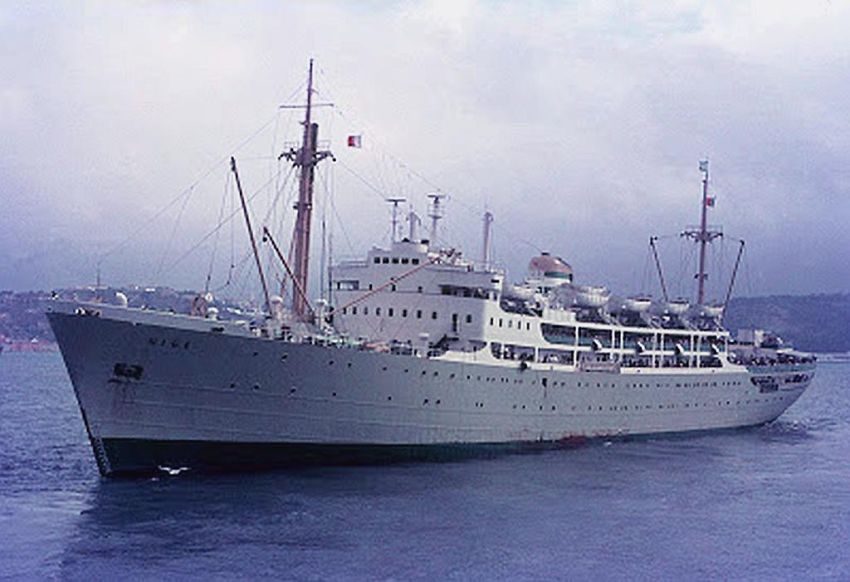
A
wonderful memory of a humble ship, yet a ship that was a
financial success for CCN!
Other
Portuguese Liners online … TS Santa Maria - Vera Cruz (1953) - SS/MS
Funchal (1960) - TS Infante Dom Henrique (1961)
************************
I watched them come, I watched them go, and I watched them
die.”
************************
This notice covers all pages, although, and I
have done my best to ensure that all photographs are duly
credited and that this notice is displaced on each page, that is,
when a page is updated!